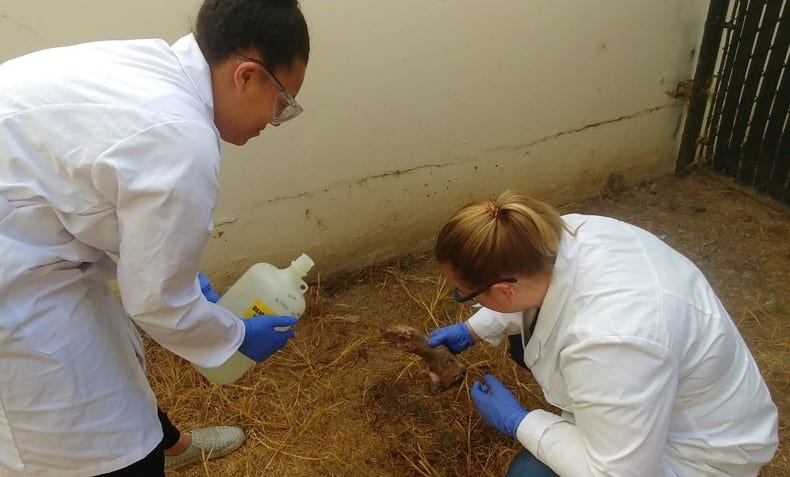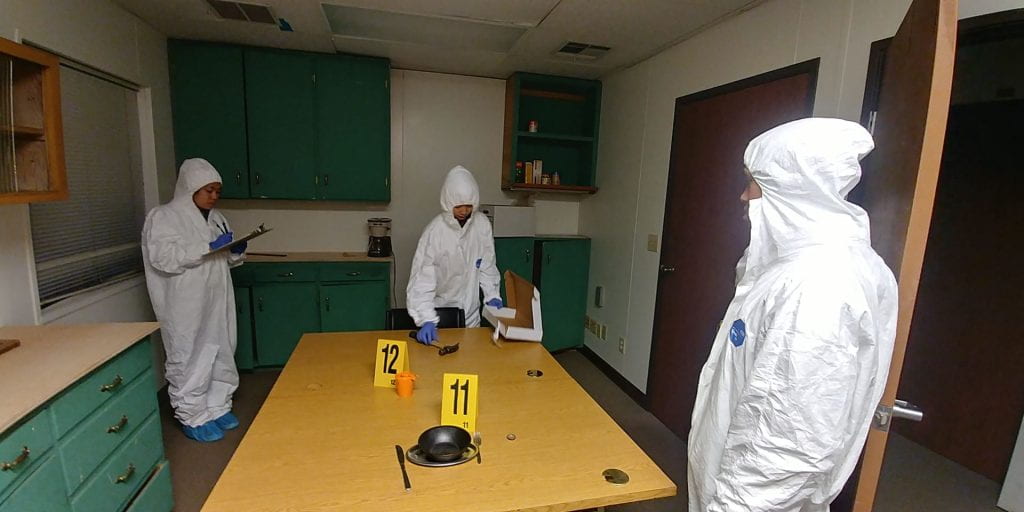This fall, the Justice Studies Forensic Science Program obtained two new facilities that will greatly expand research and teaching opportunities for students and faculty. The first facility is a crime scene investigation (CSI) house, a modular building located near Humboldt and Tenth Streets, next to the SJSU track. Additionally there are two burial spaces, one located adjacent to the CSI house and another situated behind the art and music buildings on the main campus. 
Burial spaces are used to study decomposition in outdoor settings. “The burial space is much needed in order to continue our research of investigating cartilage as a potential tool in crime investigations,” said Dr. Shawna Bolton, Assistant Professor, Forensic Science. “Cartilage has potential to be used for time-since-death determinations beyond the current 48-100-hour limitations. It may also be used for DNA identification purposes. Each of these uses is cutting edge experimental research.” Forensic science students have enthusiastically enrolled in the Justice Studies internship program to take part in this research, hoping to gain field and laboratory experiences. Just imagine how excited students are to study decomposition of remains (currently pig) in an authentic outdoor setting.
In spite of the growing interest in this research area, it has been difficult to secure grounds for a burial space. The ability to study processes of decomposition in a natural environment provides a means for improving the understanding of how various environmental factors impact the rate of decomposition, and how bodies themselves inversely modify the surrounding environment. Such information is crucial for conducting successful criminal investigations. This opportunity to conduct fieldwork on campus grounds opens many wonderful opportunities, not only for the Department of Justice Studies and its students, but the university and public at large.
The CSI house will also have a major impact on the learning environment for students in Forensic Science and those intending careers in law enforcement and investigations. Crime scene staging is a necessary tool for teaching criminalistics and crime scene investigation techniques, but there was no space on the SJSU campus dedicated to staging crime scenes. The situation is similar to having a Chemistry Department with no chemistry labs. “When SJSU was being courted for a new $100,000 scholarship endowment from the J. Edgar Hoover Foundation the site visitor told me directly that a “crime scene house” was needed at SJSU and was a glaring gap in the SJSU facilities,” says Dr. Bolton.

SJSU is the only university in the State of California that offers Bachelor of Science degrees in Forensic Chemistry and Forensic Biology. As a result, it is fitting that this university continue to make its mark as a trend setter here in Silicon Valley and California. Criminal Justice and Forensic Science programs tout these facilities as a tremendous enhancement of students’ educations. Now SJSU has both of these for their programs.
“We are pleased to have the inclusion of a burial plot and a crime scene house,” says Dr. Bolton. “Our students will now be able to partake in real-life forensic science and criminal justice applications, thereby allowing them to engage actively addressing research gaps in the discipline. The ability to conduct research on a burial site or a real house situated close to campus will make learning accessible and time-efficient for all students—removing barriers to student engagement.”

These new facilities will also strengthen existing ties and create new relationships with foreign universities that are seeking partnerships for forensic and criminal justice research. More information about the forensic science program and other programs in the Department of Justice Studies can be found at www.sjsu.edu/justicestudies.